Commercial refrigeration solutions play a vital role in the success of Australian restaurants, as the preservation of perishable food items is crucial for maintaining quality, safety, and customer satisfaction. The right commercial refrigeration system can make all the difference for your restaurant's operations, efficiency, and bottom line. Ensuring optimal storage conditions while balancing energy efficiency, space utilisation, and cost-effectiveness requires careful planning and informed decision-making.
In this comprehensive guide, we will explore essential tips and considerations for optimising commercial refrigeration in Australian restaurants. From evaluating various types of refrigeration equipment to highlighting best practices for ensuring food safety and effective inventory management, this guide will provide you with the knowledge and strategies needed to get the most out of your refrigeration solution. As a commercial refrigeration supplier in Australia, we understand the challenges faced by restaurant owners and managers in this industry, and we are here to help you navigate these complexities with practical, actionable advice.
1. Selecting the Right Refrigeration Equipment for Your Restaurant
Your restaurant's success hinges on choosing the appropriate commercial refrigeration equipment tailored to your specific needs. Let's explore some factors you need to consider when selecting the right equipment:
- Capacity and size: Evaluate your restaurant's storage requirements to determine the optimal refrigerator capacity. Factor in the floor space available to accommodate your refrigeration units while allowing for adequate clearance and ventilation.
- Temperature range: Different food items have varying temperature requirements for safe storage. Analyse your inventory to ensure your chosen refrigeration units can maintain the necessary temperature ranges, as well as provide adjustable settings for flexibility.
- Energy efficiency: Selecting energy-efficient refrigeration models can significantly reduce your energy consumption, save on operating costs, and promote sustainability. Look for models with a high energy-efficiency rating or those with innovative features, such as variable speed compressors and LED lighting.
2. Maintaining Your Refrigeration System for Optimal Performance
Proper maintenance of your commercial refrigeration system ensures optimal performance, prolongs equipment life, and enhances food safety. Implement these best practices for effective maintenance:
- Regular cleaning: Clean your refrigeration units inside and out, including condenser coils, fan blades, and door gaskets. Regular cleaning helps maintain efficiency, reduce energy consumption, and prevent wear and tear.
- System inspection: Schedule periodic inspections to proactively address potential issues and assess overall system health, including checking refrigerant levels, temperature accuracy, and equipment functionality.
- Professional servicing: Engage a professional technician for regular servicing to ensure your refrigeration system operates at peak performance and identify potential issues before they become costly problems.
3. Maximising Space Utilisation and Organisation
Strategic use of your commercial refrigeration space is essential for efficient operations and workflow. Employ these strategies for optimal space utilisation and organisation:
Inventory management: Implement a systematic approach to storing items based on their frequency of use and required storage conditions. For instance, stock frequently used items at the front of the unit and group similar items together.
- Shelving and storage solutions: Utilise customisable shelving and storage accessories, such as adjustable shelves, drawers, and bins, to optimise the available space and streamline inventory management.
- Layout considerations: Design your restaurant refrigeration layout to facilitate easy access, efficient stocking, and reduced employee traffic. A thoughtful layout can significantly impact workflow and overall efficiency.
4. Prioritising Food Safety and Compliance
Food safety is a critical concern for every restaurant, and ensuring safe storage plays a significant role. Adhere to these food safety guidelines for your commercial refrigeration system:
Temperature monitoring: Regularly monitor and record your refrigeration units' temperatures to ensure safe storage conditions are maintained consistently. Promptly address any deviations.
- First-in, first-out (FIFO) method: Implement the FIFO method for inventory management to minimise food wastage and ensure the freshest possible products are served to your customers.
- Compliance with regulations: Stay up-to-date with local and national food safety regulations, ensuring your refrigeration practices align with these standards and guidelines.
Unlocking the Potential of Optimised Commercial Refrigeration
Achieving optimised commercial refrigeration for your Australian restaurant starts with selecting the right equipment, implementing regular maintenance routines, maximising space utilisation, and prioritising food safety. By integrating these essential tips and considerations, you can enhance your restaurant's overall efficiency, reduce energy consumption, and ultimately delight your customers with exceptional food quality and safety.
At Refrigeration Experts, our team of dedicated professionals is passionate about assisting restaurants in optimising their commercial refrigeration systems, from equipment selection to maintenance support. Contact us today to learn how our refrigeration experts can partner with you on your journey to exceptional restaurant operations and a more successful, eco-friendly business.




-160x160-state_article-rel-cat.png)



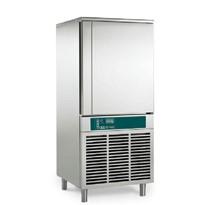



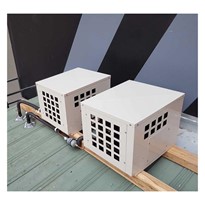
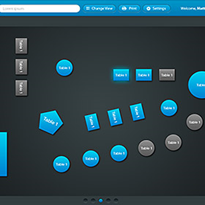
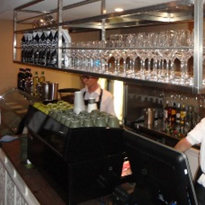


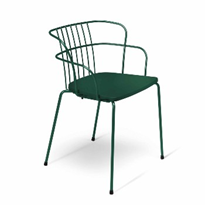
-205x205.jpg)